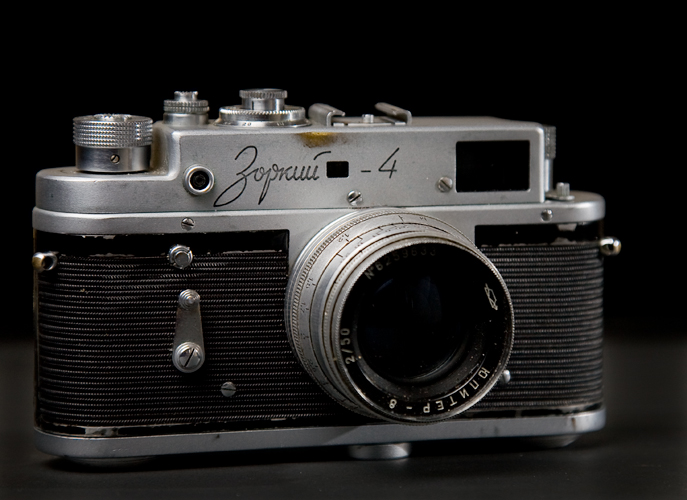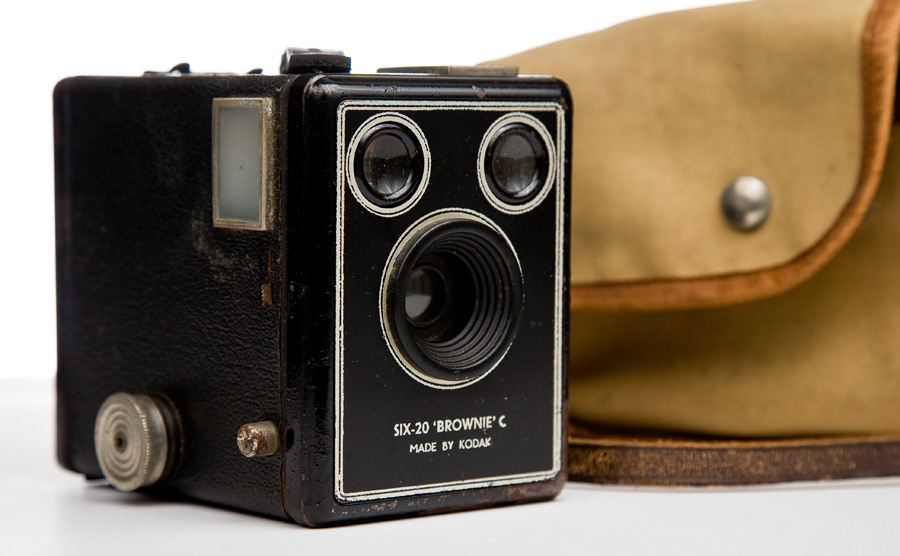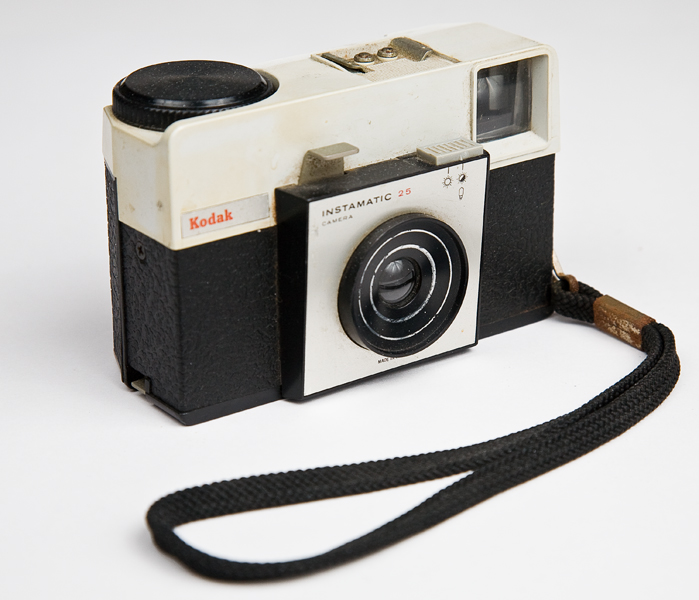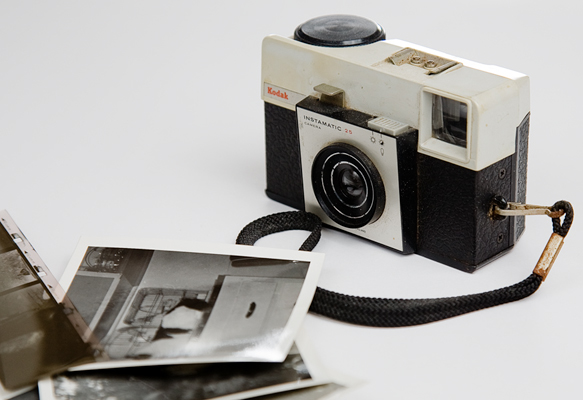Zorki 4
The second in this series of cameras in my cupboard is a Russian Soviet Zorki 4. It is another purchase; in fact it was the first item I ever won in an eBay auction.

The Zorki was made by the KMZ factory in a suburb of Moscow. The factory began producing cameras heavily based on pre-war Leicas just after the Second World War. The Zorki 4 was made from 1956 to 1973 and more than 1.7 million were produced, according to the Guide to Russian and Soviet Cameras by J. L Princelle.
From what I can work out, my camera was produced somewhere in the late 1960s. It is a classic rangefinder with a few quirks. It’s heavy and solid, made out of serious metal, not plastic. The shutter and the shutter speed dial are interconnected, so you have to cock the shutter before setting the shutter speed.
The old Zorki has had quite a few films through it over the years but it is still in good working order. There are a few wear marks on the body and a scuff on the front lens element but apart from that all is good.
Reviewers have claimed that the images from the Zorki and the other Russian Leica copy, the FED, were as good as an image from a Leica.
And the Zorki has the added advantage of a Leica-compatible screw mount lens, so there is no reason why you can’t put a Summicron on the front of it.
I can’t afford a genuine pre-war Leica, but a Zorki isn’t a bad substitute.
Edit…
A work colleague read this post and requested that I change the word ‘Russian’ to Soviet’. His reasoning is that the entire production run of the Zorki 4 was produced under the Soviet regime and isn’t exclusively Russian. And as Mikhail comes from Russia, who am I to disagree?




